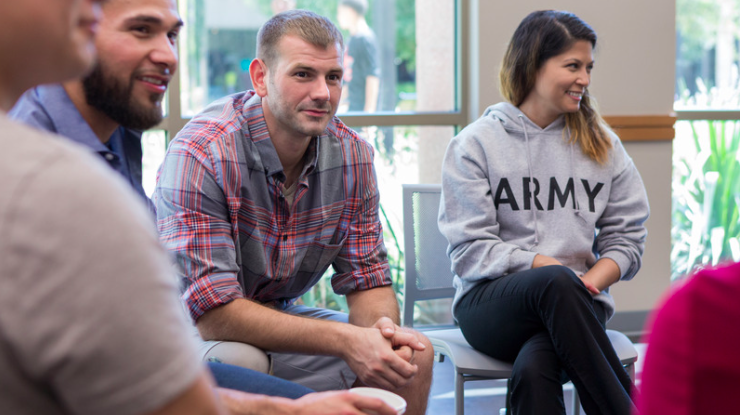Americans’ attitudes toward war are especially raw right now. When I turned 40 last week, I considered that America has been at war, the Gulf War and then the wars in Afghanistan and Iraq, for more than half of my life. During that time, roughly 7,100 service members were killed in action. Those tragic losses are among those we remember and honor every Memorial Day. But today is an opportunity to recognize the ongoing costs of war borne by veterans who do come home, and to find ways to feel and show appreciation for their sacrifices.
Veterans Are More Likely to Face Health Challenges
Service members who fought in Iraq and Afghanistan are about four times more likely to die from subsequent suicide than while deployed. Of the 16.5 million veterans in the U.S. today, an estimated hundreds of thousands suffer from post-traumatic stress disorder. And of the total population of veterans, those between 55 and 64 years old are at the highest risk for chronic illness and suicide.
Reports on the state of veterans in the United States vary to some extent, but they share in common a few other saddening facts:
- Almost half of veterans have never received care from the Veterans Affairs health system, and those who do may not get the care they need from overwhelmed facilities.
- Roughly 30% of veterans (5.5 million) are living with disabilities.
- About a million veterans (particularly older veterans) are living in poverty.
Veterans Are Working
Despite the numerous challenges that veterans face, they are also part of a category of workers who are very likely to be employed, with an unemployment rate (2.81%) that is consistently about a point lower than the national average. About 1.7 million businesses in the U.S. are veteran-owned and they collectively generate over a trillion dollars in sales. In short, most vets in the U.S. are still working very hard despite the ongoing challenges they may face.
Today’s Soldiers are Tomorrow’s Veterans
Even when the U.S. is not at war, soldiers are deployed around the globe to protect and prevent violence. Their sacrifices still include long periods away from home, family and friends, and regular exposure to danger. Bearing in mind that their experiences will directly affect their safety today and their ongoing health and opportunity tomorrow, we have an important opportunity right now to pay attention to and demand effective military organizations.
What to Do on Veterans Day
Veteran’s Day is an opportunity to remember and reflect on what we have asked veterans to do on our behalf. Most of us has lived through times of war and times of relative peace, but if we are stateside, we have almost always enjoyed extraordinary safety. That’s largely thanks to veterans.
This is also a day to appreciate what those in the armed forces have made possible for us, whether it’s our ability to move, to be safe in nature, or to contribute to our local economies. Or perhaps it’s simply the ability to be with our kids while others cannot. Consider observing the day by engaging in these freedoms.
Finally, this is a day to remind the veterans we know and those we do not that we see them, we appreciate them, and we believe that the challenges they face belong to all of us. Consider advocating for things that would serve all of us better:
- Increase overall spending on Veterans, especially for health-related services, from 4% to 6% to improve medical care and improve retirement income as the cost of living skyrockets in the U.S.
- Contact your congress person and demand that the Senate take action immediately to unblock key defense confirmations that have been held up since early 2023.
- Find a veteran and thank them!
Observing Veterans Day can be a meaningful way to reconnect with all the things we gain by the sacrifices of others—even when they must engage in such odious things as war. Because of them, we have the opportunity to enjoy freedoms that people in many parts of the world simply do not. Take advantage of this opportunity!

